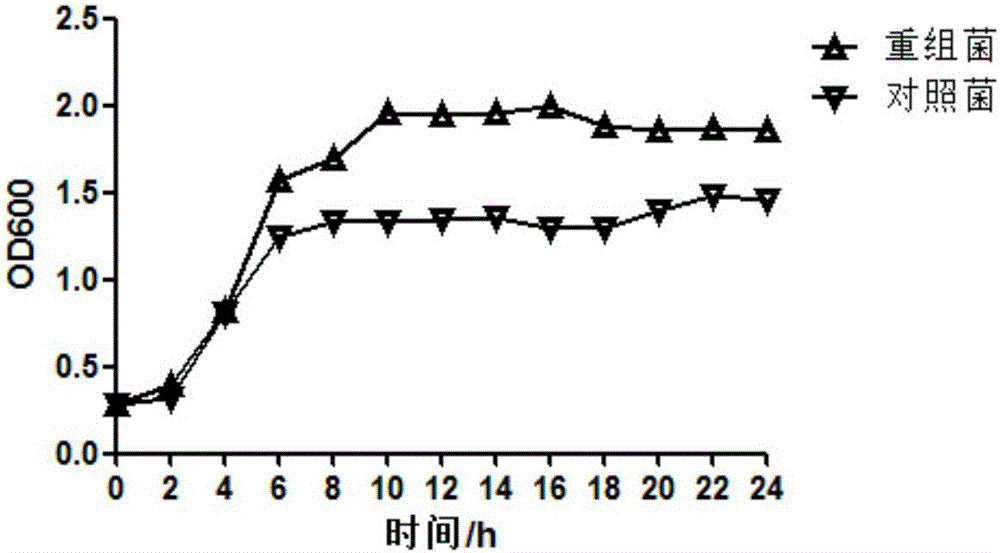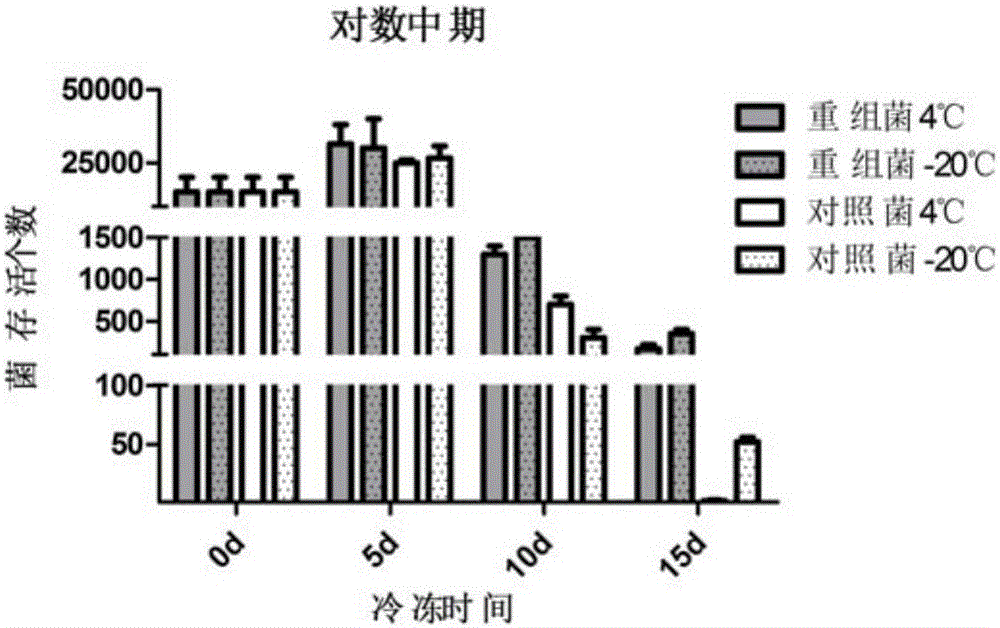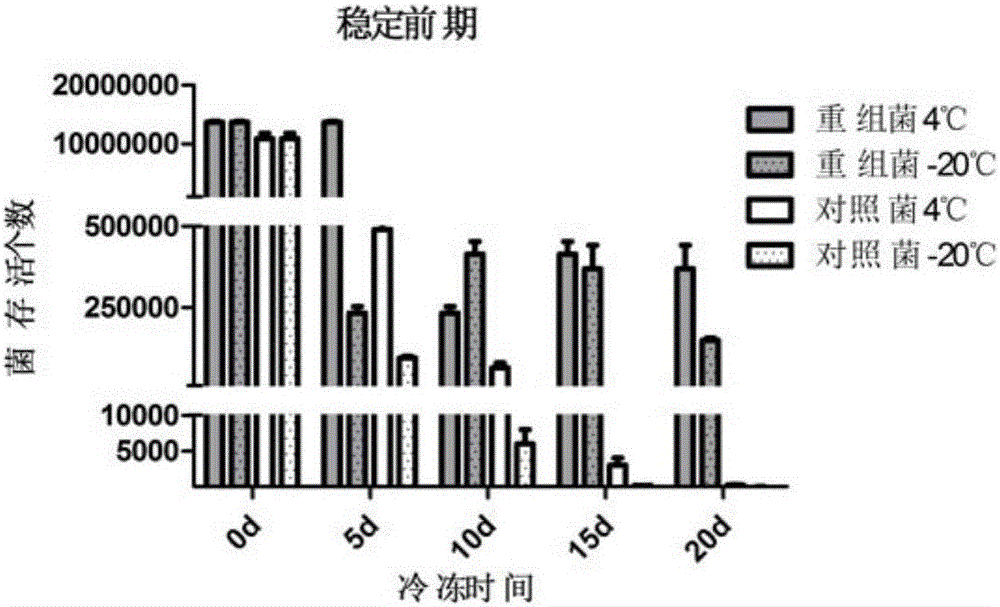GAD gene for increasing stress tolerance of lactic acid bacteria and application thereof
A lactic acid bacteria, stress-tolerant technology, applied in application, genetic engineering, plant genetic improvement and other directions, to achieve the effect of improving survival rate, improving low temperature stress tolerance and acid stress tolerance
- Summary
- Abstract
- Description
- Claims
- Application Information
AI Technical Summary
Problems solved by technology
Method used
Image
Examples
Embodiment Construction
[0027] The technical solution of the present invention will be further explained and illustrated through specific embodiments below in conjunction with the accompanying drawings.
[0028] 1. Construction of recombinant expression strains:
[0029] Amplify the CsGAD gene sequence that the inventor cloned from tea leaves in the early stage, connect it to the expression vector pNZ8148 of Lactococcus lactis to obtain the recombinant plasmid pNZ8148-CsGAD, and then electrotransform it into the host bacterium L.lactisNZ9000, The recombinant strain L. lactis NZ9000-CsGAD was obtained (the lactic acid bacteria L. lactis NZ9000 and the expression plasmid vector pNZ8048 were purchased from Hunan Changsha Yingrun Biotechnology Co., Ltd.). The detailed steps are as follows:
[0030] (1) According to the obtained tea tree GAD gene sequence, the sequence is shown in SEQ ID NO.1, using Primer 5.0 software to design a pair of primers at the 5' and 3' of the sequence:
[0031] CsGAD-up CCG ...
PUM
 Login to View More
Login to View More Abstract
Description
Claims
Application Information
 Login to View More
Login to View More - R&D
- Intellectual Property
- Life Sciences
- Materials
- Tech Scout
- Unparalleled Data Quality
- Higher Quality Content
- 60% Fewer Hallucinations
Browse by: Latest US Patents, China's latest patents, Technical Efficacy Thesaurus, Application Domain, Technology Topic, Popular Technical Reports.
© 2025 PatSnap. All rights reserved.Legal|Privacy policy|Modern Slavery Act Transparency Statement|Sitemap|About US| Contact US: help@patsnap.com



